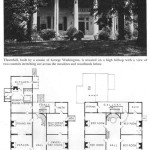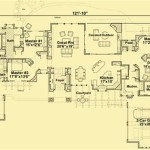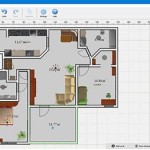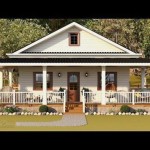Building House Plans refer to detailed drawings and specifications that provide the blueprint for constructing a residential property. They outline the layout, dimensions, materials to be used, and construction methods for every aspect of the house, ensuring that all components align and meet building codes and regulations. A well-designed house plan serves as the backbone of a successful construction project, guiding architects, engineers, contractors, and homeowners throughout the building process.
The significance of building house plans cannot be overstated. They provide a comprehensive roadmap that ensures the project remains on track, minimizing costly mistakes, delays, and safety hazards. Without a clear plan, the construction process becomes disorganized, leading to potential gaps in communication, material shortages, and structural issues. By establishing a detailed plan upfront, homeowners and construction professionals can anticipate challenges, allocate resources efficiently, and guarantee the timely completion of a safe, functional, and aesthetically pleasing house.
In this article, we will delve deeper into the key components of building house plans, exploring the different types available, the benefits they offer, and the process of creating a customized plan that meets specific needs and preferences. We will also discuss the importance of working with experienced professionals to ensure the accuracy and effectiveness of your house plans.
Building house plans encompass various important elements that contribute to the successful execution of a construction project. Here are nine key points to consider:
- Site Plan
- Floor Plans
- Elevations
- Sections
- Details
- Specifications
- Material List
- Energy Efficiency
- Accessibility
These elements work together to provide a comprehensive blueprint for the construction process, ensuring that all aspects of the house are carefully planned and executed.
Site Plan
The site plan is a crucial component of building house plans that outlines the placement and orientation of the house on the building site. It provides a detailed layout of the property, including the location of the house, driveway, walkways, patios, decks, and any other structures or features on the land. The site plan also indicates the property lines, easements, setbacks, and any natural or man-made features that may impact the construction process.
Creating an accurate site plan requires careful consideration of various factors, including the size and shape of the property, the topography of the land, and the location of existing utilities and infrastructure. The plan should ensure that the house is positioned optimally on the site to maximize sunlight, views, and privacy, while adhering to local building codes and zoning regulations.
The site plan serves as a guide for site preparation and excavation, ensuring that the foundation of the house is laid in the correct location and that the surrounding landscape is graded and contoured appropriately. It also helps determine the location of utility connections, such as water, sewer, gas, and electricity, and facilitates the coordination of landscaping and hardscaping elements.
Overall, the site plan is a vital part of building house plans that establishes the foundation for a well-designed and functional home that is integrated harmoniously with its surrounding environment.
Floor Plans
Floor plans are detailed drawings that depict the layout of each level of a house, providing a comprehensive overview of the spatial relationships between rooms, hallways, and other interior spaces. They typically include dimensions, wall thicknesses, door and window openings, and the location of built-in elements such as fireplaces, stairs, and cabinetry.
Floor plans are essential for visualizing the flow and functionality of a house. They allow architects, builders, and homeowners to make informed decisions about room sizes, traffic patterns, and the placement of furniture and fixtures. By carefully planning the layout of each floor, it is possible to create a home that is both aesthetically pleasing and practical for everyday living.
When creating floor plans, it is important to consider the following factors:
- Room size and shape: The size and shape of each room should be carefully considered to ensure that it is both functional and comfortable. Rooms should be large enough to accommodate the intended furniture and activities, but not so large that they feel empty or overwhelming.
- Traffic flow: The flow of traffic through the house should be smooth and efficient. Floor plans should be designed to minimize congestion and create a natural flow between different spaces.
- Privacy: The floor plan should provide a balance between privacy and openness. Private areas, such as bedrooms and bathrooms, should be separated from public areas, such as the living room and kitchen.
- Natural light: Floor plans should be designed to maximize natural light. Windows and doors should be strategically placed to allow sunlight to penetrate deep into the house.
Once the floor plans have been finalized, they can be used to create a three-dimensional model of the house. This model can be used to visualize the house from different angles and perspectives, and to make any necessary adjustments to the design.
Floor plans are an essential part of building house plans. They provide a detailed roadmap for the construction process, ensuring that the house is built to the exact specifications and meets the needs of the homeowners.
Elevations
Elevations are detailed drawings that show the exterior appearance of a house from different sides. They provide a comprehensive view of the house’s height, width, and depth, and illustrate the relationship between the different facades. Elevations are typically drawn to scale and include dimensions, window and door openings, and the location of exterior features such as balconies, porches, and chimneys.
Elevations are essential for visualizing the overall form and style of a house. They allow architects, builders, and homeowners to make informed decisions about the exterior design, materials, and finishes. By carefully planning the elevations, it is possible to create a house that is both aesthetically pleasing and functional.
When creating elevations, it is important to consider the following factors:
- Architectural style: The elevations should reflect the desired architectural style of the house. This includes the choice of siding, roofing, windows, doors, and other exterior elements.
- Roof shape: The shape of the roof is a major determinant of the overall appearance of the house. Elevations should clearly show the roof pitch, overhangs, and any dormers or other roof features.
- Exterior materials: The choice of exterior materials will impact the overall look and feel of the house. Elevations should indicate the materials to be used for siding, roofing, windows, doors, and trim.
- Landscaping: The landscaping around the house can complement and enhance the overall design. Elevations should take into account the location of trees, shrubs, and other landscaping elements.
Once the elevations have been finalized, they can be used to create a three-dimensional model of the house. This model can be used to visualize the house from different angles and perspectives, and to make any necessary adjustments to the design.
Elevations are an essential part of building house plans. They provide a detailed roadmap for the construction process, ensuring that the house is built to the exact specifications and meets the needs of the homeowners.
Sections
Sections are detailed drawings that show the interior construction of a house. They are typically drawn to scale and include dimensions, structural elements, and the location of mechanical, electrical, and plumbing systems. Sections are essential for visualizing the three-dimensional structure of a house and ensuring that all of the components fit together properly.
Sections are used to illustrate the following aspects of a house:
- Structural elements: Sections show the location and size of structural elements such as walls, beams, columns, and trusses. This information is essential for ensuring that the house is strong and stable.
- Mechanical systems: Sections show the location and size of mechanical systems such as heating, ventilation, and air conditioning (HVAC) systems, plumbing systems, and electrical systems. This information is essential for ensuring that the house is comfortable and safe.
- Interior finishes: Sections can also show the location and size of interior finishes such as flooring, wall coverings, and ceiling finishes. This information is essential for visualizing the overall look and feel of the house.
Sections are an essential part of building house plans. They provide a detailed roadmap for the construction process, ensuring that the house is built to the exact specifications and meets the needs of the homeowners.
In addition to the above, sections can also be used to illustrate the following:
- Fire safety features: Sections can show the location and size of fire safety features such as fire walls, fire doors, and smoke detectors. This information is essential for ensuring that the house is safe in the event of a fire.
- Accessibility features: Sections can show the location and size of accessibility features such as ramps, grab bars, and wider doorways. This information is essential for ensuring that the house is accessible to people with disabilities.
- Energy efficiency features: Sections can show the location and size of energy efficiency features such as insulation, solar panels, and geothermal heating and cooling systems. This information is essential for ensuring that the house is energy efficient and environmentally friendly.
By providing a detailed view of the interior construction of a house, sections are an essential tool for architects, builders, and homeowners alike.
Details
Details are individual drawings that provide specific information about particular aspects of a house’s construction. They are typically drawn to a larger scale than floor plans and elevations, and they include detailed dimensions, materials, and construction methods.
- Window and Door Schedules: These schedules provide detailed information about the windows and doors in the house, including their size, type, material, and location. Window and door schedules are essential for ensuring that the windows and doors are ordered and installed correctly.
- Cabinetry Details: These details provide information about the design, construction, and installation of the cabinetry in the house. Cabinetry details are essential for ensuring that the cabinetry is built to the correct specifications and that it fits properly in the space.
- Trim and Molding Details: These details provide information about the design, construction, and installation of the trim and molding in the house. Trim and molding details are essential for ensuring that the trim and molding is installed correctly and that it complements the overall design of the house.
- Hardware Schedules: These schedules provide information about the hardware used in the house, including the type, size, and finish of the hardware. Hardware schedules are essential for ensuring that the hardware is ordered and installed correctly.
Details are an essential part of building house plans. They provide the specific information that is needed to construct the house to the exact specifications. By providing detailed information about every aspect of the house’s construction, details help to ensure that the house is built to the highest quality standards and that it meets the needs of the homeowners.
Specifications
Specifications are written documents that provide detailed information about the materials, products, and construction methods to be used in the construction of a house. They are an essential part of building house plans, as they ensure that all aspects of the house are constructed to the same high standards.
- Materials: The specifications will list the specific materials to be used for every aspect of the house’s construction, including the foundation, framing, roofing, siding, windows, doors, and interior finishes. The specifications will also include information about the quality and grade of the materials to be used.
- Products: The specifications will list the specific products to be used in the construction of the house, including appliances, fixtures, and equipment. The specifications will also include information about the manufacturer, model, and warranty of each product.
- Construction Methods: The specifications will describe the specific construction methods to be used in the construction of the house. This includes information about the methods to be used for framing, roofing, siding, and interior finishing. The specifications will also include information about the quality control procedures to be followed during construction.
- Codes and Standards: The specifications will list the codes and standards that the house must meet. This includes building codes, energy codes, and accessibility codes. The specifications will also include information about the inspections that will be required to ensure that the house meets all applicable codes and standards.
Specifications are an essential part of building house plans. They provide the detailed information that is needed to construct the house to the exact specifications. By providing detailed information about every aspect of the house’s construction, specifications help to ensure that the house is built to the highest quality standards and that it meets the needs of the homeowners.
Material List
The material list is a comprehensive document that lists all of the materials that will be used in the construction of a house. It includes information about the quantity, size, and type of each material, as well as the supplier and cost. The material list is an essential part of building house plans, as it helps to ensure that the project is completed on time and within budget.
- Lumber: The material list will include a detailed list of all of the lumber that will be used in the construction of the house, including the type of wood, the size of the lumber, and the quantity of each type of lumber. The material list will also include information about the supplier and cost of the lumber.
- Concrete: The material list will include information about the type of concrete that will be used in the construction of the house, the quantity of concrete that will be needed, and the supplier and cost of the concrete. The material list may also include information about the concrete mix design and the concrete placement methods.
- Masonry: The material list will include information about the type of masonry units that will be used in the construction of the house, the quantity of masonry units that will be needed, and the supplier and cost of the masonry units. The material list may also include information about the mortar mix design and the masonry installation methods.
- Insulation: The material list will include information about the type of insulation that will be used in the construction of the house, the quantity of insulation that will be needed, and the supplier and cost of the insulation. The material list may also include information about the insulation installation methods.
The material list is an essential part of building house plans. It helps to ensure that the project is completed on time and within budget. By providing a detailed list of all of the materials that will be used in the construction of the house, the material list helps to avoid delays and cost overruns. The material list also helps to ensure that the house is built to the highest quality standards.
Energy Efficiency
Energy efficiency is a key consideration in building house plans. By incorporating energy-efficient features into the design of a house, homeowners can reduce their energy consumption and save money on their utility bills. There are many different ways to improve the energy efficiency of a house, including:
Insulation: Insulation is one of the most important factors in improving the energy efficiency of a house. Insulation helps to keep the house warm in the winter and cool in the summer, reducing the amount of energy needed to heat and cool the house. There are many different types of insulation available, so it is important to choose the right type for the climate and the house. Adding proper insulation to attics, walls, and floors can help to reduce heat gain and loss. It is usually measured in terms of R-value, which indicates its resistance to heat flow. Higher R-values mean greater insulation effectiveness.
Windows and Doors: Windows and doors are another important area to consider when improving the energy efficiency of a house. Windows and doors that are not properly sealed can allow air to leak in and out, which can lead to heat loss in the winter and heat gain in the summer. Installing energy-efficient windows and doors can significantly reduce air leakage and improve the overall thermal performance of the building envelope.
Appliances: The appliances in a house can also have a significant impact on energy consumption. When choosing appliances, it is important to look for models that are energy-efficient. Energy-efficient appliances use less energy to operate, which can save money on utility bills. Look for appliances with the ENERGY STAR label, which indicates that they meet certain energy-efficiency standards set by the U.S. Environmental Protection Agency (EPA).
Lighting: Lighting is another area where homeowners can save energy. By using energy-efficient light bulbs, homeowners can reduce their energy consumption and save money on their utility bills. LED (light-emitting diode) and CFL (compact fluorescent lamp) bulbs use significantly less energy compared to traditional incandescent bulbs while providing similar or better lighting.
By incorporating energy-efficient features into the design of a house, homeowners can reduce their energy consumption, save money on their utility bills, and help to protect the environment. When building a new house or renovating an existing house, it is important to consider energy efficiency as a top priority.
Accessibility
Universal Design Principles
Accessibility in building house plans refers to the design of homes that are accessible to people of all abilities, including those with disabilities. Universal design principles aim to create environments that are usable and equitable for everyone, regardless of their age, size, ability, or disability.
Creating Accessible Spaces
To create accessible spaces, building house plans should incorporate features such as wider doorways, ramps or elevators for stairs, accessible bathrooms with roll-in showers or grab bars, and lever-operated door handles or faucets. These features allow individuals with mobility impairments to navigate the home safely and independently.
Accommodating Sensory Needs
Accessibility also extends to accommodating sensory needs. Building house plans can include features such as dimmable lighting or natural light options for individuals with visual impairments, soundproofing or quiet spaces for those with auditory sensitivities, and non-slip flooring or tactile surfaces for individuals with balance or coordination issues.
Benefits of Accessible Design
Incorporating accessibility features into building house plans not only benefits individuals with disabilities but also creates a more inclusive and comfortable environment for everyone. Accessible homes allow for aging in place, enabling older adults to remain in their homes as they age. They also provide a welcoming and equitable space for guests and visitors of all abilities.
By following universal design principles and incorporating accessibility features into building house plans, architects and builders can create homes that are not only beautiful and functional but also accessible to everyone.









Related Posts








